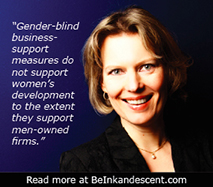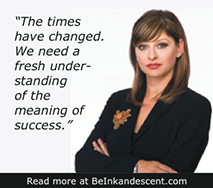
By Carol Kinsey Goman, PhD
Keynote speaker on collaborative leadership and the impact of body language in the workplace
CarolKinseyGoman.com
Most leaders today are aware of the need to look confident, powerful, and assertive, but fewer understand the impact of empathy and warmth. And this may be more of a career-limiting factor than they know.
As organizations move toward more collaborative cultures, your success as a leader increasingly depends on your ability to make team members feel valued, respected, and included.
While power and confidence are nonverbally displayed by expanding into height and space, when you want to encourage collaboration, you’d be wise to replace those status cues with warmer ones—and that starts by keeping your body relaxed and open.
In open and receptive postures, legs are uncrossed and arms are held away from the body, with palms exposed or resting comfortably on the desk or conference table. Studies show that leaders with open body language are perceived more positively and are more persuasive.
Leaning is another way your body makes a statement. Leaning backward usually signals feelings of dislike or negativity, as we subconsciously try to distance ourselves from anyone we don’t like or trust.
On the other hand, liking and trust are often displayed by leaning forward—especially when sitting down. But if you are using forward leans as a means to build positive relationships, be aware that early leans can make people uncomfortable and decrease their perception of you as likeable. So wait until you’ve developed a degree of interpersonal comfort. Then make your move.
When it comes to the body language of inclusion, facing people directly when they’re talking is crucial. Even a quarter-turn away signals your lack of interest and can make the speaker shut down.
Mirroring is another nonverbal sign of empathy and inclusion. You may not realize it, but when you are dealing with people you genuinely like or agree with, you’ll begin to match their stance, arm positions, and facial expressions. It’s a way of signaling that you are connected and engaged.
You can also use your head. The next time you are in a conversation where you’re trying to encourage someone to continue speaking, try nodding your head using clusters of three nods. Research shows that people will talk three to four times more than usual when the listener nods in this manner.
Head tilting is another signal that you are interested and involved. So head tilts can be very positive cues when you want to send messages of empathy and understanding. But a tilted head may also be subconsciously processed as a submission signal—dogs will tilt their heads to show their necks in deference to a more dominant animal. So don’t overuse this signal.
Of course, paying attention when someone else is speaking is one of the warmest signals you can send. So at your next meeting, avoid the temptation to check your text messages, your watch, or how the other participants are reacting. Instead, focus on whoever is speaking to make sure that he or she feels valued, respected, and included.
About Carol Kinsey Goman
Carol Kinsey Goman, PhD, is an international keynote speaker who specializes in the link between body language and leadership effectiveness. Contact her at CarolKinseyGoman.com.









































































































